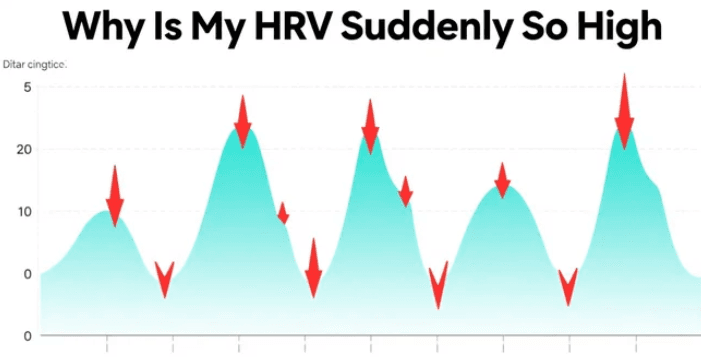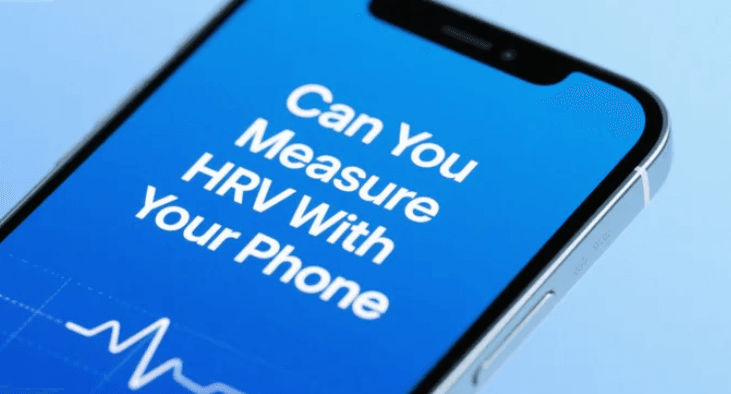How Can I Check My HRV at Home? A Complete Guide to Tracking Heart Rate Variability
Understanding HRV and Why It Matters
Heart Rate Variability, or HRV, is the variation in time between each heartbeat. Unlike your resting heart rate, which simply measures beats per minute, HRV focuses on the micro-intervals between beats. A high HRV generally indicates better cardiovascular fitness, stress resilience, and a healthy autonomic nervous system. Conversely, a low HRV might signal chronic stress, fatigue, or underlying health issues.
HRV has become a popular metric for athletes, wellness enthusiasts, and even those looking to manage anxiety or improve sleep. Thanks to advancements in mobile technology, tracking HRV no longer requires bulky medical equipment. You can now check your HRV at home using your phone, smartwatch, or dedicated health apps.
Ways to Monitor HRV at Home
There are several ways to monitor your HRV without visiting a clinic. Here are the most common and accessible methods:
1. Smartphone Apps
Many modern apps use your phone's camera or pair with a heart rate monitor to analyze HRV. These apps usually require you to place your finger over the camera for a minute while the flash illuminates your skin, detecting subtle changes in blood flow. Algorithms then analyze the time intervals between heartbeats to calculate your HRV score.
2. Wearable Devices
Smartwatches and fitness bands like the Apple Watch, Garmin, WHOOP, and Oura Ring can continuously track your HRV throughout the day or during sleep. These devices provide insights into your recovery, stress levels, and overall wellness. Data is often synced to an app for easier tracking and interpretation.
3. Chest Strap Monitors
Chest strap heart rate monitors, such as Polar H10 or Garmin HRM, provide highly accurate HRV data. These devices are preferred by athletes and health professionals because they capture precise R-R intervals (the exact timing between heartbeats). You can connect them to apps via Bluetooth for a comprehensive HRV analysis.
How to Measure HRV Accurately at Home
Consistency is key when measuring HRV. To ensure accurate and meaningful data:
- Take readings at the same time every day (preferably in the morning).
- Ensure you're in a relaxed, seated or lying position.
- Limit movement and external distractions during measurement.
- Use the same device or method each time for consistency.
Many apps provide weekly trends or averages, which are more important than isolated readings. A single low score isn't a reason to panic—what matters is the trend over time.
Using HRV to Improve Your Health
Regularly tracking your HRV helps you become more aware of your body’s stress and recovery patterns. A consistently high HRV typically indicates you're recovering well and adapting positively to stress or training. On the other hand, a downward trend may suggest the need for more rest, changes in diet, or stress management techniques.
HRV can also help guide your workouts. For instance, if your HRV is unusually low one morning, it might be a good day to opt for yoga instead of intense cardio.
Recommended App: Bodywave
If you're looking for a reliable and user-friendly app to check your HRV at home, Bodywave is an excellent choice. The app is designed to measure your stress levels and heart rate variability using your phone or compatible wearable devices. It provides real-time feedback, trend analysis, and personalized wellness insights.
Bodywave makes HRV tracking simple, helping you understand your body’s signals and optimize your daily routine for better mental and physical health.
What Factors Affect HRV?
Many factors can influence your HRV, both positively and negatively. Understanding these can help you take action to improve your HRV at home:
- Sleep quality: Deep, uninterrupted sleep supports higher HRV.
- Exercise: Moderate physical activity boosts HRV over time.
- Stress levels: Chronic stress reduces HRV. Mindfulness and breathing techniques can help.
- Nutrition: Balanced diets rich in micronutrients contribute to better autonomic balance.
- Hydration: Staying hydrated keeps your cardiovascular system functioning optimally.
- Alcohol and caffeine: Both can temporarily lower HRV, especially when consumed in excess.
Best Practices for HRV Tracking at Home
To get the most out of your at-home HRV monitoring, consider the following best practices:
- Track your HRV daily and analyze weekly trends.
- Pair HRV data with lifestyle logs—note sleep hours, mood, exercise, and diet.
- Use HRV to personalize your training intensity and rest days.
- Set goals for gradual HRV improvement through healthy habits.
Apps like Bodywave help simplify this process by offering integrated journaling and visualization tools, so you don’t need to track everything manually.
Is At-Home HRV Tracking Reliable?
Yes, modern technology has made at-home HRV monitoring increasingly reliable. While medical-grade ECGs are the gold standard, most wearables and apps offer data that's accurate enough for personal wellness tracking and training decisions. The key is to use the same device consistently and interpret your HRV within the broader context of lifestyle and wellbeing.
Some tools even use artificial intelligence to detect trends and give personalized suggestions, making it easier for non-experts to benefit from HRV insights.
HRV and Mental Health Monitoring
Besides physical health, HRV is also a powerful tool in tracking mental well-being. It correlates with anxiety, depression, and burnout. A low HRV, especially in the absence of physical stressors, can be a sign of emotional stress or overwork. Using HRV trends in conjunction with mindfulness practices can help you make timely interventions.
This is another reason why using apps like Bodywave is beneficial—they combine physiological monitoring with stress management tools.
Conclusion: Empower Yourself Through Data
Learning how to check your HRV at home empowers you to understand your body’s stress response and overall wellness. Whether you’re an athlete, a busy professional, or someone managing anxiety, HRV monitoring offers personalized insights that can guide your decisions around rest, activity, and mental health.
With the right tools—like wearables and the Bodywave app—you can transform your phone into a powerful wellness companion. The best part? You can do it all from the comfort of your home.







BodyWave: Invest in Your Well-being!

